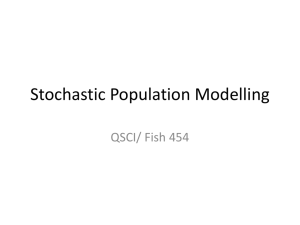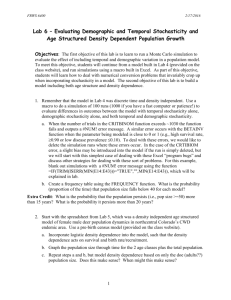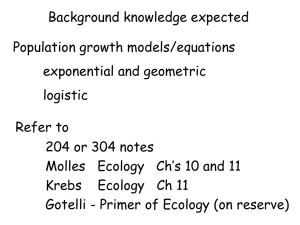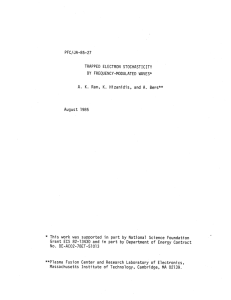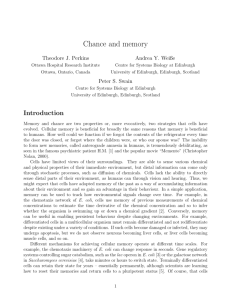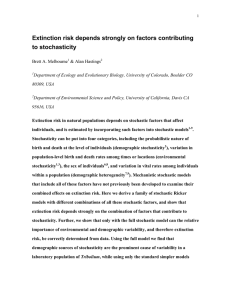Deterministic vs. stochastic models • In deterministic models, the
advertisement
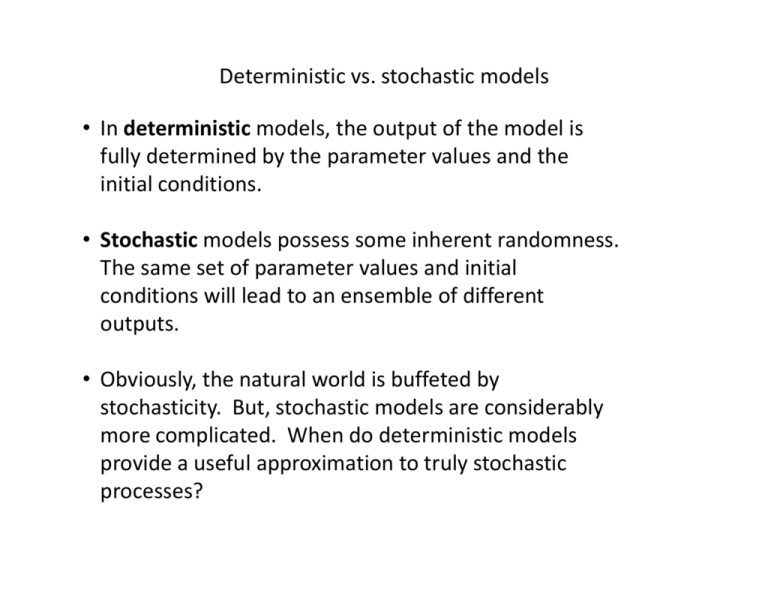
Deterministic vs. stochastic models • In deterministic models, the output of the model is fully determined by the parameter values and the initial conditions initial conditions. • Stochastic models possess some inherent randomness. The same set of parameter values and initial conditions will lead to an ensemble of different outputs. p • Obviously, the natural world is buffeted by stochasticity But stochastic models are considerably stochasticity. But, stochastic models are considerably more complicated. When do deterministic models provide a useful approximation to truly stochastic processes?? Demographic vs. environmental stochasticity • Demographic stochasticity describes the randomness that results from the inherently discrete nature of individuals It has the largest impact on small individuals. It has the largest impact on small populations. • Environmental stochasticity describes the randomness resulting from any change that impacts an entire p p population (such as changes in the environment). Its ( g ) impact does not diminish as populations become large. Stochastic models, brief mathematical considerations • There are many different ways to add stochasticity to the same deterministic skeleton. • Stochastic models in continuous time are hard. • Gotelli provides a few results that are specific to one way of adding stochasticity. Demographic stochasticity has its biggest impact on small populations 6 runs of stochastic logistic growth model, carrying capacity = 10 Demographic stochasticity has its biggest impact on small populations 6 runs of stochastic logistic growth model, carrying capacity = 1000 A stochastic version of the geometric population growth model Nt 1 λ(t )Nt • Suppose that Suppose that has the following probability distribution: has the following probability distribution: = 0.9 with probability ½ = 1.1 with probability ½ 11 i h b bili ½ What are typical behaviors of this population? • Stochastic population growth yields log‐normally distributed population sizes • Many small populations, few large ones y p p , g • The rate of change of the average population size overestimates the “typical” overestimates the typical growth rate growth rate experienced by most populations. • Mathematical details, for those interested: 1 1 t t E N N t E t E λ N0 N0 Average rate of change of the population • (this is Jensen (this is Jensen’ss inequality) inequality) Rate of change of the average of the average population

